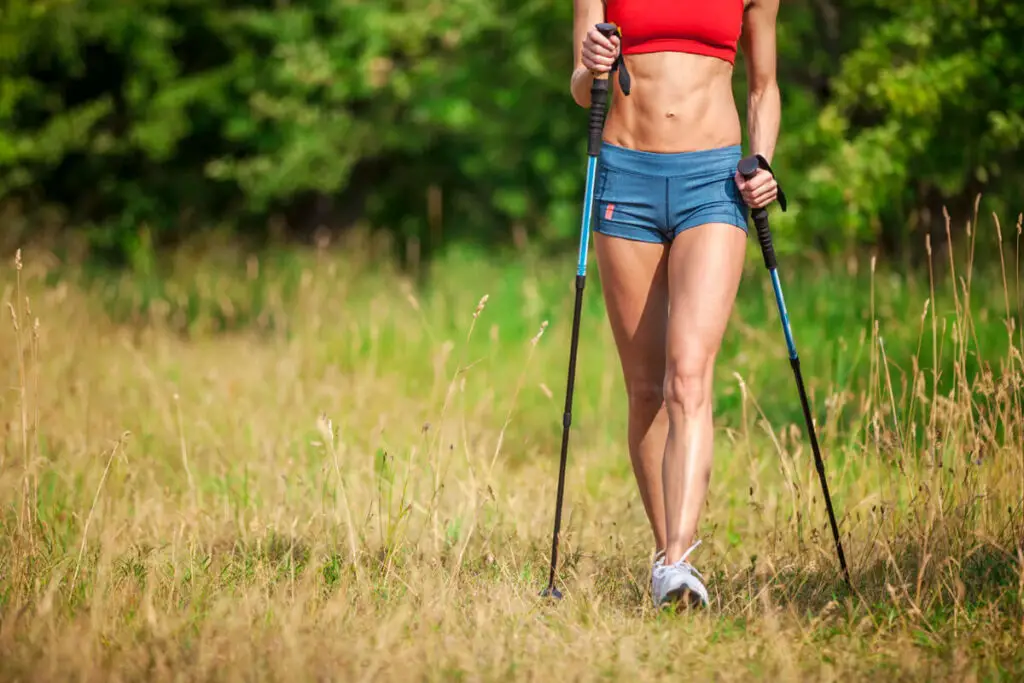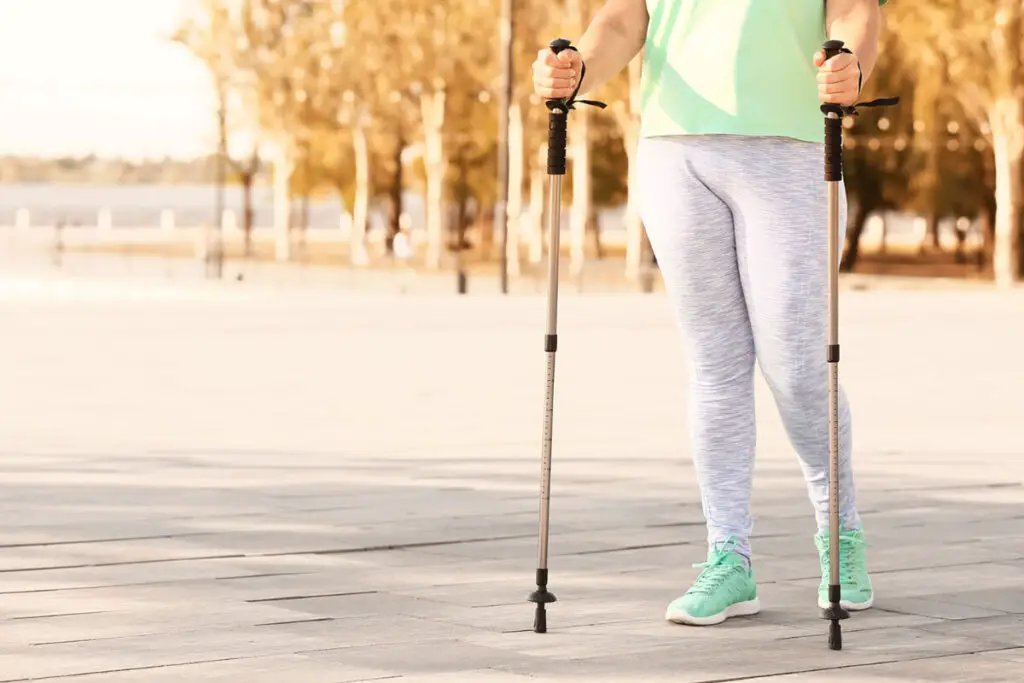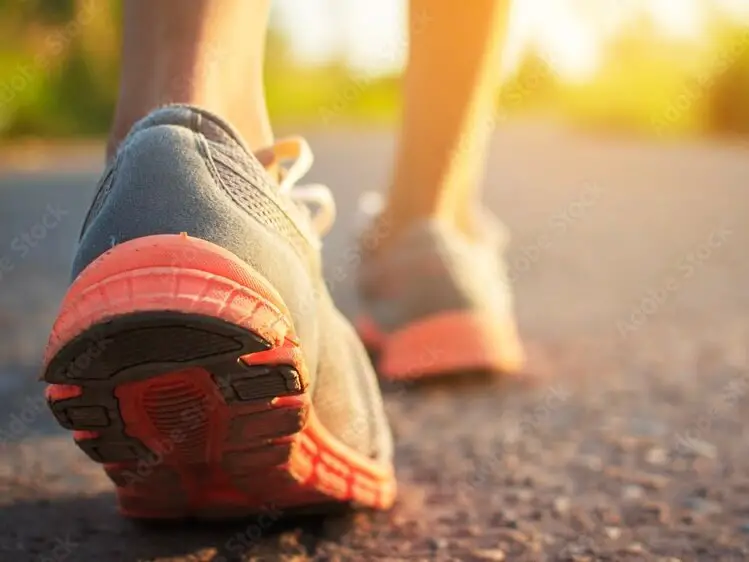An exercise that many people have been talking about lately is Nordic Walking. Recent studies have shown that Nordic walking is a far better exercise than just regular walking.
Nordic walking is a technique where you use poles to propel you forward when walking. Nordic walking uses more muscles than just regular walking. To master the Nordic walking technique, you should focus on three main areas: the Nordic walking style, the correct posture, and the proper use of the Nordic walking poles.
Table of Contents
What Is Nordic Walking?

Nordic walking is a form that has been taking parts of the world by storm, but it is a relatively new type of sport in the United States.
Nordic walking a defined as follows:
“Nordic Walking is a form of physical activity, where regular, natural walking is enhanced by the addition of the active use of a pair of specially-designed Nordic Walking poles. However, the characteristics of natural, biomechanically-correct walking and appropriate posture are maintained in all aspects.“
International Nordic Walking Federation
Nordic walking started in Finland in about the 1970s. It was used to help keep the Finnish Cross Country ski team in shape during the off-season. Nordic walking then began spreading around Europe, Asia, and North America.
One of the major mistakes people make when Nordic Walking is they think the walking poles should be in front of them, similar if they are hiking or going up a mountain. For Nordic Walking, arm movement is similar to natural walking.
The Nordic Walking position of the poles is similar to many of the classical features of cross-country skiing. A few things to remember with the poles when Nordic walking include:
- Poles are behind you. They are not in front like hiking, But it is almost like you are dragging the poles behind you.
- You control the poles with the grip and strap. The correct poles have a glove that lets you have the poles behind you in a loose grip.
- The use of the poles helps to engage the upper body when walking.
In technical terms, the Nordic poles engage the upper body when walking. This ensures that most muscle groups are targeted through Nordic walking.
Because of the use of the poles, 80 to 90% of your muscle groups are used compared to 50% when just walking. You will use more muscles with Nordic walking than with regular walking.

Listen To Our Podcast About What Is Nordic Walking? by clicking here.
Learning To Master Nordic Walking
Nordic Walking is an excellent way to increase your overall well-being while walking. The focus on Nordic walking is physical and mental well-being. But like any new sport you are going to learn, you need to be able to master some basics about Nordic Walking.

The first thing you will need for Nordic walking is poles that fit you correctly. Not just any fit, but they must fit your size and height. Fitting Nordic walking poles is similar if you also fitted cross-country skiing poles.
My sister has some poles that I have used, but the problem is that she is shorter than me, so her poles are shorter than mine. When I use her poles, I tend to lean forward as the poles are too short.
That is why when you start Nordic walking, you need to have a set of poles, the correct size for the poles, and the right kind of poles. To master Nordic Walking, you must ensure that your poles are correct for you.
Once you have the poles, you can start focusing on your technique. Nordic Walking focuses on three main areas that you need to understand:
- Correct Nordic Walking Technique – You need to be able to learn and master the proper Nordic walking technique. Concentrate on first mastering the essential Nordic Walking step.
- Correct Posture – You must walk with the proper posture for Nordic walking. It would help if you were walking straight up and not hunched over. Your chest should be open.
- Correct Use Of Poles – You must understand how to use the poles correctly. The grip should be light and not heavy or tight on the poles. The Nordic walking poles have tiny rubber feet or a prick for the colder weather if you are walking on ice. The feet will ensure that you propel yourself forward the right way.
If you can find a store specializing in Nordic walking poles, we suggest you go there and have them help fit you with the correct size poles. Many of these same shops may also have Nordic walking groups, coaching, or a bit of Nordic walking training.
If you cannot find a store near you, you can check out information from the INWA or the International Nordic Walking Federation by clicking here. The INWA is located in Finland, where Nordic walking originally started.
Reluctant Low Carb Life explores all aspects of keto and low carb lifestyle, fitness, health, wellness, and aging gracefully. At the Reluctant Low Carb Life, we strive to give honest and accurate information from people trying to live the low carb and keto lifestyle while improving their fitness and health.
We have a free monthly newsletter that is filled with information and helps you remain updated. Subscribe to the Reluctant Low Carb Life newsletter by clicking here.
Listen to our weekly podcast, Reluctant Low Carb Life, on all the major podcast platforms by clicking here.
Follow us on Instagram and Facebook by clicking here.
Related Question
Is Walking 7 Miles A Day Good Exercise?
Walking seven miles a day is great exercise. But even if you cannot walk seven miles a day, just getting out to walk has many physical and mental benefits. Studies have shown us how important walking is for not only our overall physical health but also our mental health.
You can read more about Is Walking 7 Miles A Day Good Exercise? by clicking here.
What Will Be The Effect Of Exercise If I Don’t Change My Diet?
There are many benefits to exercise, such as our overall well-being and health, we will age better, our minds become sharper, we can handle some of the stresses in life better, we live life to the fullest, and we can better manage our weight.
You can read more about What Will Be The Effect Of Exercise If I Don’t Change My Diet? by clicking here.








